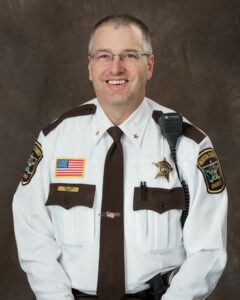Mahatma Gandhi said “an eye for an eye will only make the whole world blind.” Interpersonal conflict happens. In fact, harassment complaints consistently rank in the top five most reported crimes in Benton County.
In conflict situations, each of us can only control how we choose to respond. There is no doubt there are people in this world whose primary skill lies in their ability to provoke, agitate and escalate others. When dealing with individuals who are working to provoke and harass, choosing a wise response is crucial. The first step to take when receiving unwanted communication is to block the source. Blocking people on social media, blocking certain numbers from calling or texting your phone, automatically sending unwanted emails to junk, or trespassing individuals from your property are steps anyone can take to put up roadblocks to harassing communications
Often, removing from the harassing party the satisfaction of your reaction is enough to get the person to stop and move onto the next object of their wrath. Documenting the harassment and the steps you take to stop them is a good idea because you can show law enforcement or a judge what has been said.
Another option is to make a report to law enforcement when harassers find routes around roadblocks or make threats of violence. State law prohibits people from stalking, making repeated harassing communications or making threats. Each case of harassment is unique and will need to be evaluated to determine whether the behavior is a crime.
Law enforcement can assist in documenting the harassing behavior and can help stop the behavior either by a warning, issuing a citation or arrests in cases that are criminal behavior.
Those suffering from serious, persistent harassment may bring their case to the courts for relief. Victims may seek a harassment restraining order from the court that prohibits the suspect from continued contact. An HRO is a powerful tool for law enforcement to assist in ending the harassment. An HRO is useful in all cases but particularly so in cases where the suspect’s behavior approaches but does not cross into criminal behavior. In almost all cases, an HRO will prohibit any contact between the suspect and the victim. With an HRO in place, all law enforcement needs to prove is that contact was initiated by the suspect to obtain probable cause for an arrest. For all but the most committed criminals, being arrested for a violation of an HRO is a powerful deterrent and typically puts an end to the issue.
Victims must file for an HRO at their county courthouse by completing an application detailing the reasons the court should issue an HRO. Victims filing for an HRO should list as much information as possible. The judge will only know as much about the situation as the information included in the application and must make a significant ruling based upon evidence presented to the court concerning the need for this HRO. Including all the pertinent details of the situation is important.
In most cases, following those steps will result in an end to harassing behavior. There are some in this world whose criminal, violent tendencies will compel them to persist, even in the face of escalating consequences. Victims of harassment should make an honest assessment of their personal safety based upon what they know about the suspect. Law enforcement may be able to assist in this process if the agency has information concerning the suspect’s history. Making a personal safety plan should go hand in hand with all the steps above to help ensure your safety. Turning the other cheek in times of conflict requires patience and practice. This choice can be the most impactful one in any interpersonal-conflict situation. For more crime prevention information and safety information, visit the Benton County Sheriff’s Office website at: https://www.co.benton.mn.us/211/Crime-Prevention. You can also like and follow us on Facebook and Twitter at @BentonMNSheriff for regular updates and crime-prevention messages.
Benton County Sheriff Troy Heck has been with Benton County law enforcement for 24 years, as a patrol officer, an investigative sergeant and as a member of the Central Minnesota Drug Enforcement Task Force.




